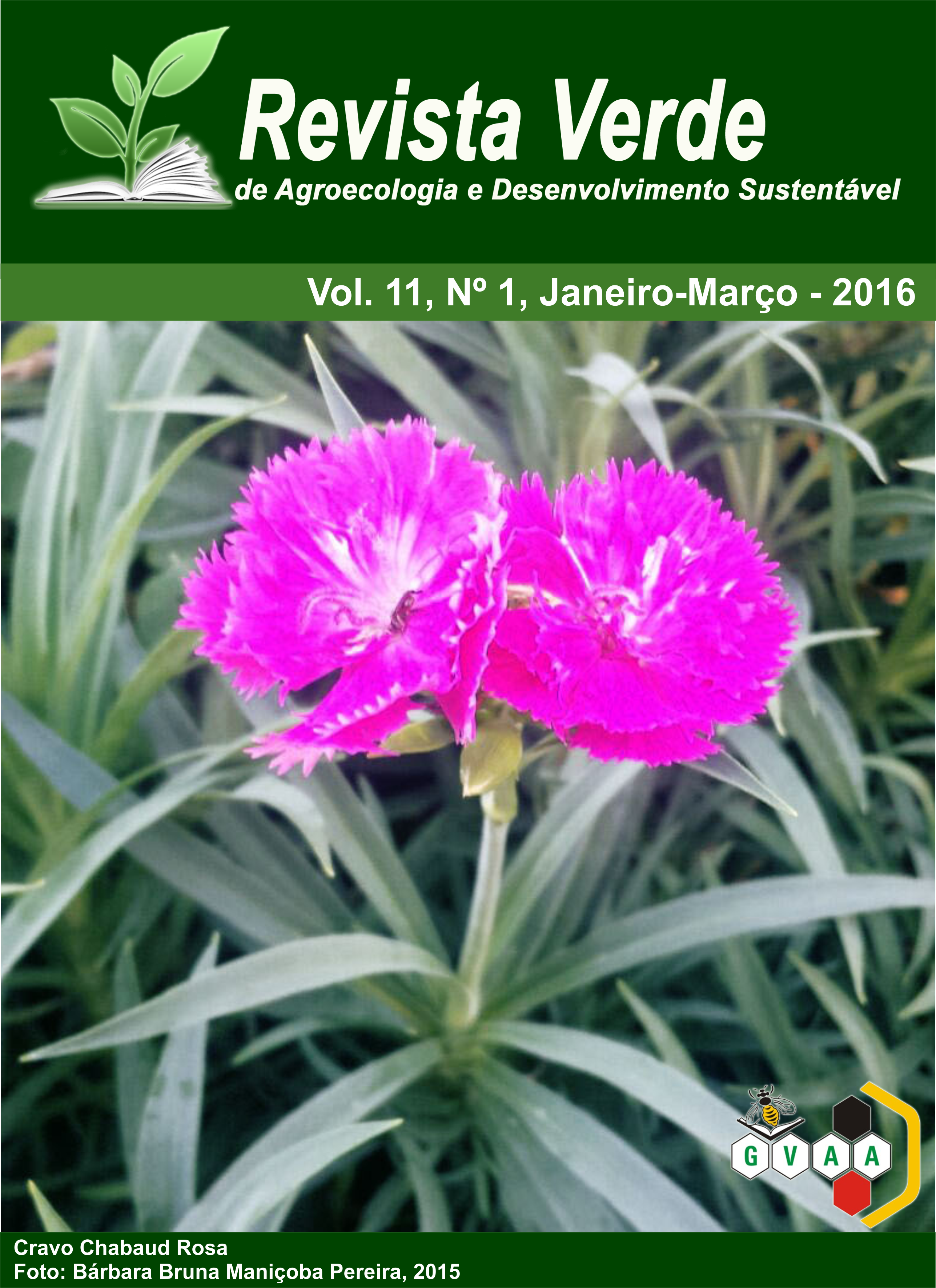Herbicide performance in weed control in corn silage
DOI:
https://doi.org/10.18378/rvads.v11i1.4015Keywords:
Zea mays L., competition, mesotrione, atrazineAbstract
In Santa Catarina, the production of grains of maize shares space with the production of corn silage, which is used in cattle as forage for cattle food. In this sense, it is important to search for alternatives that minimize the loss of productivity, among them, reduce competition caused by weeds that affect the biomass accumulation. The objective was to evaluate the efficiency of Primóleo® (atrazine) and Callisto® (mesotrione) herbicides in the control of weeds in corn silage in two seasons of crops. The tests were arranged in a randomized block design, in 4x2 factorial design (different types of control and different vintages). The treatments were applications of atrazine and mesotrione herbicides, mechanical weeding and the witness. For the application, it was carried out the survey of the population of weed all plots with an area of 12 square meters each. After, with the applied treatments, it was made visual assessments of control efficiency at 14, 21 and 28 days after application, where atrazine was more efficient than the mesotrione. Other variables analyzed were: productivity, ear height and ear yield.Through these, it was found that mechanical weed control is more efficient than chemical control, and no significant difference between maize yield using the mesotrione and atrazine herbicides regardless of the growing season.
Downloads
References
ALFONSI, R. R.; VICTORIA FILHO, R.; SENTELHAS, P. C. Épocas de semeadura para a cultura do milho no Estado de SP, baseadas na probabilidade de atendimento hídrico. Revista Brasileira de Agrometeorologia, Santa Maria, v.5, n.1, p. 43-40, 1997.
COMPANHIA NACIONAL DE ABASTECIMENTO. Acompanhamento da safra brasileira de grãos, v. 1, n.1 (2013). Brasília: Conab, 2015.
CIRILO, A. G. E.; ANDRADE, F. H. Sowing date and maize productivity: I. Crop growth and dry matter partitioning. Crop Science, Madison. v.34, p.1039-1043, 1994.
DOURADO NETO, D.; MARTIN, T. N.; CUNHA, V. S.; STECCA, J.; D. L.; NUNES, N. V. Controle de plantas daninhas no milho com o herbicida tembotrione. Enciclopédia Biosfera, Goiânia, v.9, n.17; p.808-817, 2013.
DURÃES, F.O.M.; MAGALHÃES. P.C.; COSTA, J.D.;FANCELLI, A.L. Fatores ecofisiológicos que afetam o comportamento do milho em semeadura tardia (“safrinha”) no Brasil central. Scientia Agricola, Piracicaba, v.52, n.2, p.491-591, 1995.
FERREIRA, D. F. Sisvar - sistema de análise de variância para dados balanceados. Lavras: UFLA, 1998. 19 p.
FREITAS I. L. J. Seletividade e eficiência de herbicidas no manejo de plantas daninhas em milho pipoca. Goytacazes: UFRJ, 2010. p.77. (Tese de doutorado)
FOLONI, L. L. Callisto® (mesotrione) – um novo herbicida pós-emergente para a cultura do milho (Zea mays L.). In: Congresso Brasileiro da Ciência das Plantas Daninhas, 23, Gramado, 2002. Anais... SSCPD, p.1-110, 2002.
FORNAROLLI, D.; DONIZETE, A.; BENEDITO, N.; RODRIGUES, D.; VALÉRIO, A. Influência do horário de aplicação no comportamento de atrazine e misturas aplicadas em pós-emergência na cultura do milho. Planta Daninha, Viçosa, v. 17, n.1, p.119-130,1999.
IBGE-INSTITUTO BRASILEIRO DE GEOGRAFIA E ESTATÍSTICA. Censo Agropecuário, 2013. Disponível em: http://www.ibge.gov.br. Acesso em: out/2015.
MAPA, Ministério da Agricultura, Pecuária e Abastecimento. Disponível em:<http://www.agricultura.gov.br>. Acesso em 08 nov. 2015.
MEROTTO JÚNIOR, A. et al. Aumento da população de plantas e uso de herbicidas no controle de plantas daninhas em milho. Planta Daninha, Viçosa, v.15, n.2, p.141-151, 1997.
MUZIK, T.J. Influence of environmental factors on toxicity to plants. In: AUDUS, L.J. Herbicides: physiology, biochemistry and ecology. 2 ed. London. 1976. Academic Press. v. 2, n 7, p. 203-407, 1976.
SILVA, P.R.F. da, et al. Adequação da densidade de semeadura de plantas à épocas de semeadura em milho irrigado. Revista de Ciências Agroveterinárias, Lages, v.9, n.1, p 2010.
SILVA, P. S. L.; MESQUITA, S. S. X.; ANTÔNIO, R. P.; SILVA, P. I. B. Number and time of weeding effects on maize grain yield. Revista Brasileira de Milho e Sorgo, Sete Lagoas, v.3, n.2, p.204-213, 2004.
Síntese Anual da Agricultura de Santa Catarina. v.1 1976 – 2014. Florianópolis: Epagri/Cepa, 1976-Anual.
SOCIEDADE BRASILEIRA DA CIÊNCIA DAS PLANTAS DANINHAS. Procedimentos para instalação, avaliação e análise de experimentos com herbicidas. Londrina: SBCPD, 1995. 42 p.
VIDAL, R.A.; FLECK, N. G.; MEROTTO JR., A. Período anterior ao dano no rendimento econômico: nova abordagem sobre os períodos de interferência entre plantas daninhas e cultivadas. Planta Daninha, Viçosa, v.23, n.3, p.387-396, 2005.
VIDAL, R.A.; SPADER, V.; FLECK, N.G.; MEROTTO JUNIOR, A. Dose de injúria econômica do herbicida cyanazine na cultura do milho. Revista Brasileira de herbicidas, Londrina, v.3, n.2/3, p.127-132, 2002.
ZAGONEL, J.; FERNANDES, E. C.; FERREIRA, C. Períodos de convivência e programa de controle de plantas daninhas em simulação de milho resistente a glifosato. In: Congresso Brasileiro da Ciência das Plantas Daninhas, 27, 2010, Ribeirão Preto. Anais... SSCPD, p.1854-1857, 2010.











